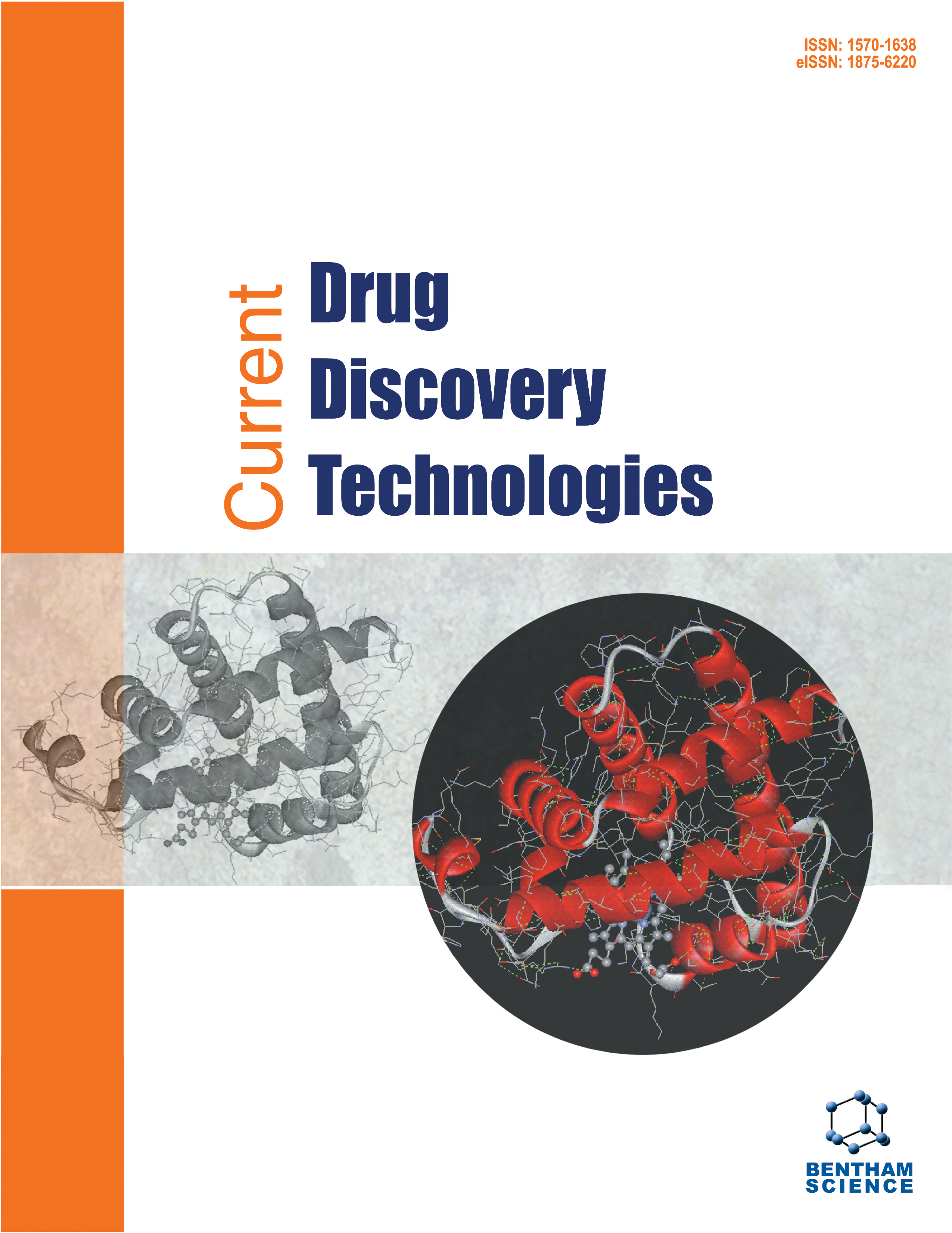- Home
- A-Z Publications
- Current Drug Discovery Technologies
- Previous Issues
- Volume 6, Issue 4, 2009
Current Drug Discovery Technologies - Volume 6, Issue 4, 2009
Volume 6, Issue 4, 2009
-
-
Editorial [Hot topic: Drug Targeting of Autoimmunity (Guest Editor: Manfred Kunz)]
More LessBy Manfred KunzChronic inflammatory and autoimmune diseases are a major cause of morbidity and mortality in the industrialized world, affecting 3 to 8 % of the population. The wide spectrum of these diseases includes rheumatoid arthritis, systemic lupus erythematosus, psoriasis, multiple sclerosis, type-1 diabetes, Crohn's disease, and systemic sclerosis. Besides apparent clinical differences, there are also many clinical and pathogenic ove Read More
-
-
-
Current Treatment of Psoriasis with Biologics
More LessBy Manfred KunzPsoriasis is a chronic inflammatory skin disease with a significant number of patients suffering from additional joint involvement and other co-morbidities. The precise pathomechanisms of this disease are still unknown. But based on recent findings a picture emerges putting a new subset of inflammatory T cells, so-called Th17 T cells, into the centre of psoriasis pathogenesis. These cells secrete interleukin (IL)-17 and a furt Read More
-
-
-
Update on Clinical, Pathophysiological and Therapeutic Aspects in ANCAAssociated Vasculitides
More LessAuthors: Peter Lamprecht, Julia Holle and Wolfgang L. GrossAnti-neutrophil cytoplasmic autoantibody (ANCA)-associated vasculitides (AAV) comprise the most common group of primary systemic vasculitides and include Wegener's granulomatosis (WG), microscopic polyangiitis (MPA), Churg-Strauss syndrome (CSS), and renal-limited vasculitis (RLV). AAV share the feature of necrotizing predominantly small vessel vasculitis, but are otherwise distinct diseases with differences in the genetic Read More
-
-
-
Biologics as Treatment for Systemic Lupus: Great Efforts, Sobering Results, New Challenges
More LessAuthors: Johann O. Schroder and Rainald A. ZeunerSystemic lupus erythematosus (SLE) is an autoimmune disease characterized by specific organ manifestations and the production of autoantibodies to nuclear antigens. SLE can induce severe organ damage and carries the risk of fatal outcome. During recent years, no major progress has been made regarding new treatment options except for the introduction of mycophenolate mofetil. Therefore, the results of several large clin Read More
-
-
-
Metabolic Changes in Autoimmune Diseases
More LessMetabolomics is a recently emerging member of the “omics” technologies. It aims at detecting and quantifying all detectable small molecules, the so-called metabolites, present in a biological sample. Because of the lower number of metabolites compared with the number of genes and proteins identified in genomics and proteomics approaches, data of metabolic studies are less complex and may therefore be more info Read More
-
-
-
Mouse Models of Autoimmune Diseases
More LessAuthors: Andreia Marques and Susen MullerSignificant progress has been made in past decades in our understanding of the basic mechanisms underlying autoimmune diseases. Nevertheless, many questions remain unanswered, in particular regarding the mechanisms at very early stages of these diseases. Reliable animal models are of crucial importance in basic research and may help us to understand central disease pathways. They are also indispensable for pre-clinic Read More
-
-
-
Current Treatment of Autoimmune Blistering Diseases
More LessAuthors: Michael Kasperkiewicz and Enno SchmidtAutoimmune bullous diseases are a heterogeneous group of disorders that can be subdivided according to the level of split formation in the intraepidermal blistering pemphigus diseases and subepidermal bullous disorders, latter including pemphigoid diseases, epidermolysis bullosa acquisita, and dermatitis herpetiformis. In the majority of autoimmune bullous disorders, disease activity can be sufficiently controlled b Read More
-
-
-
Therapeutic Use of Heparin beyond Anticoagulation
More LessHeparin has been used as an anticoagulant for decades. Recently, attention has been drawn to the nonanticoagulant activities of heparin. Experimentally and clinically those non-anticoagulant properties of heparin inhibit inflammation and metastatic spread of tumor cells. On the molecular level, heparin inhibits the function, expression and/or synthesis of adhesion molecules, cytokines, angiogenic factors and com Read More
-
-
-
Crohn's Targeted Therapy: Myth or Real Goal?
More LessAuthors: Klaus J. Schmidt, Jurgen Buning, Carsten Jankowiak, Hendrik Lehnert and Klaus FellermannThe broad spectrum of chronic inflammatory bowel diseases encompasses the two main entities Crohn's disease (CD) and ulcerative colitis (UC). Rapid action and long-term duration is the superordinate goal in most therapeutic approaches facing chronic inflammation including inflammatory bowel diseases (IBD) for induction and maintenance of remission. The availability of antibodies targeting TNF-α or alpha 4 integrin has r Read More
-
-
-
Core-in-Cup Tablet Design of Metoprolol Succinate and its Evaluation for Controlled Release
More LessThe core-in-cup matrix tablets of Metoprolol succinate were prepared by wet granulation technique. Of all the investigated formulations, the optimized formulation of MS-09 followed zero-order kinetics of drug release. Trail on MS- 09 was formulated using 7.5% hydrogenated castor-oil (HCO) and 4% of hydroxyl propyl methylcellulose (HPMC K15M) with an objective to achieve a linear release profile for 24 h. There is no Read More
-
Volumes & issues
-
Volume 22 (2025)
-
Volume 21 (2024)
-
Volume 20 (2023)
-
Volume 19 (2022)
-
Volume 18 (2021)
-
Volume 17 (2020)
-
Volume 16 (2019)
-
Volume 15 (2018)
-
Volume 14 (2017)
-
Volume 13 (2016)
-
Volume 12 (2015)
-
Volume 11 (2014)
-
Volume 10 (2013)
-
Volume 9 (2012)
-
Volume 8 (2011)
-
Volume 7 (2010)
-
Volume 6 (2009)
-
Volume 5 (2008)
-
Volume 4 (2007)
-
Volume 3 (2006)
-
Volume 2 (2005)
-
Volume 1 (2004)
Most Read This Month
Article
content/journals/cddt
Journal
10
5
false
en


